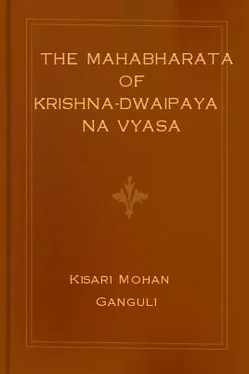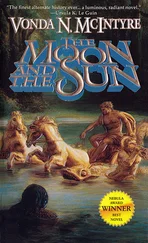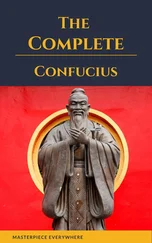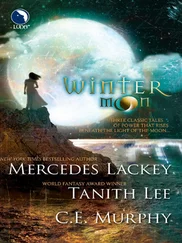Kisari Mohan Ganguli - The Mahabharata of Krishna-Dwaipayana Vyasa
Здесь есть возможность читать онлайн «Kisari Mohan Ganguli - The Mahabharata of Krishna-Dwaipayana Vyasa» весь текст электронной книги совершенно бесплатно (целиком полную версию без сокращений). В некоторых случаях можно слушать аудио, скачать через торрент в формате fb2 и присутствует краткое содержание. Издательство: ManyBooks.net, Жанр: на английском языке. Описание произведения, (предисловие) а так же отзывы посетителей доступны на портале библиотеки ЛибКат.
- Название:The Mahabharata of Krishna-Dwaipayana Vyasa
- Автор:
- Издательство:ManyBooks.net
- Жанр:
- Год:неизвестен
- ISBN:нет данных
- Рейтинг книги:3 / 5. Голосов: 1
-
Избранное:Добавить в избранное
- Отзывы:
-
Ваша оценка:
- 60
- 1
- 2
- 3
- 4
- 5
The Mahabharata of Krishna-Dwaipayana Vyasa: краткое содержание, описание и аннотация
Предлагаем к чтению аннотацию, описание, краткое содержание или предисловие (зависит от того, что написал сам автор книги «The Mahabharata of Krishna-Dwaipayana Vyasa»). Если вы не нашли необходимую информацию о книге — напишите в комментариях, мы постараемся отыскать её.
The Mahabharata of Krishna-Dwaipayana Vyasa — читать онлайн бесплатно полную книгу (весь текст) целиком
Ниже представлен текст книги, разбитый по страницам. Система сохранения места последней прочитанной страницы, позволяет с удобством читать онлайн бесплатно книгу «The Mahabharata of Krishna-Dwaipayana Vyasa», без необходимости каждый раз заново искать на чём Вы остановились. Поставьте закладку, и сможете в любой момент перейти на страницу, на которой закончили чтение.
Интервал:
Закладка:
37. Dhava is Anogeissus latifolia. Wall, sin, Conocarpus latifolia Roxb. Kakubha is otherwise called Arjuna which is identified with Terminalia Arjuna, syn. Pentaptera Arjuna. Kadamva is Nauclea cadamba, Roxb. Kuruveka is Barleria cristata, Linn. Ketaka is Pandanus odoratissimus, Linn. Jamvu is Eugenia Jambolana. Patala is Stereospermum suaveolens syn. Bignonia suaveolens, Roxb. Varunaka is Crataea, religiosa, syn. Capparis trifoliata, Roxb. Vatasanabha is Aconitum ferox, Wall. Vilwa is Aegle Marmelos. Sarala is Pinus longifolia, Roxb. Kapittha is Feronia Elephantum. Piyala is Buchanania latifolia. Sala is Shorea robusta. Vadari is Zisyphus jujuba. Kunda is Balanites Roxburghii, Punnaga is Callophyllum inophyllum. Asoka is Saraca. Indica, Linn, syn Jonesia Asoka, Roxb. Amra is Mangifera Indica. Kovidara is Bauhinia, accuminata Linn. Champaka is Michelia Champaka, Linn. Panasa is Artocarpus integrifolia, Linn.
38. Ganga is represented as the daughter of Rishi Jahnu, and hence is she known by the name of Jahnavi. What is meant by Jahnavi having been always represent there is that the goddess always stayed there in spirit, desirous of conferring merit upon those that would reverence her.
39. i.e., never searching for food but taking what they saw, and never using their hands also.
40. Graha is literally a planet; here, Mandara who is likened to an evil planet in consequence of the mischief he did unto all.
41. Yoga in verse 84 is explained by the commentator as meaning the power of creation. Chandra-Surya-parjanya-prithivyadi-sristi-samarthyam. Similarly, by Saswatam Valam is meant that power which arises from Brahmavidya.
42. Surabhi is the celestial cow, the original progenetrix of all kine in Heaven and on Earth.
43. A Sanyasin is one that bears the stick as the badge of the mode of life he has adopted. Chatrin is the king. Kundin is one with the calabash. The meaning is that it is Mahadeva who becomes the Sanyasin or the mendicant on the one hand and the monarch on the other.
44. Every person belonging to the three superior orders bears the Upavita or sacred-thread as his badge. The deities also, including Mahadeva, bear the Upavita. Mahadeva's Upavita is made of living snakes.
45. Arupa is formless, or as the commentator explains, nishkala, i.e., without parts, being indivisible. Arupa is of the form of multifarious acts or operations or effects in the universe. Adyarupa is Hiranyagarbha.
46. The commentator explains that by saying that Maheswara is in the heart, etc., what is stated is that he is the several cases of which Jiva is made up while in his unemancipate state, viz., the Annamaya kosha, the pranamaya kosha, the Manomaya kosha, and the Vijnanmaya kosha. What is meant by Yogatman is that he is the Soul or essence of Yoga of the Chidachidgranthi, i.e., the Anandamaya kosha. By Yogasanjnita is meant that he is Yoga or the Twam padarthah.
47. The meaning seems to be this; the man that is not devoted to Mahadeva is sure to be subjected to misery. His distress will know no bounds. To think that such a man has reached the lowest depth of misery only when from want of food he has to live upon water or air would not be correct.
48. Bhuta-bhavana-Bhavajnam is one acquainted with both the bhavana and the bhava of all bhutas, i.e., all the living creatures.
49. Without the Srutis, He cannot be comprehended, for he is above all dialectics or arguments. The object which the Sankhya system has in view, flows from Him, and the object also which the Yogins have in view has its origin in Him.
50. Mahadeva, has spoken of as Brahma, first filled Space with his energy. Space forming, as it were, the material with which everything else was created. Having filled Space as it were with creative energy, he created the primeval egg and placed Brahma or the Grandsire of the universe within it.
51. Tanmatras are the subtile elements, those which we perceive being gross ones.
52. Here Mahadeva is represented as Supreme Brahman. Hence, the Being that created Brahma, Vishnu, and Rudra, derived his power to create from Mahadeva. Thus Mahadeva is Unmanifest Brahma.
53. Sampadayitum is aisaryyena samyojayitum. The difficulty lies in the first line; the ablative is to be taken as yabartha or lyablope.
54. This is an instance of crux; adhipati is a verb of incomplete predication, implying etya or encountering.
55. Here the compassion of Mahadeva is shown. The commentator explains that eshu refers to these words; chatanachetanani would include all animate and inanimate existences. The word adi following implies heaven and all unseen entities. Avyaktamuktakesa is a periphrasis for jiva; avyaktam aspashtam yathasyattatha muktah bhanti tirohitam nitya-muktatwama sya is the explanation offered. This is, no doubt correct. The sense then is that all this has flowed from Maheswara and exists for being enjoyed by Jiva.
56. The allusion is thus explained by the commentator; once upon a time the seed of Mahadeva fell upon a blazing fire. The deity of fire removed it, unable to consume it. The seed, however, thus removed became converted into a mountain of gold. Haimagiri is not Himavat or the mountains of Himalayas as the Burdwan translation wrongly renders it.
57. Ardhe sthita kanta refers to the transformation of Mahadeva into a form half of which was male and half female, the male half being the half of his own usual form, and the female half the form of his dear spouse Uma or Parvati. This transformation is known by the name of Haragauri.
58. The associates of Mahadeva are called Gana. Deva is in the vocative case. The Burdwan translator wrongly takes deva-ganah as a compound word and makes a mess of the meaning.
59. The Bombay reading is Vihitam karanam param. The commentator adopts it, and explains it as vihitam, ajnatam sat jnapitam; param karanam avyaktasyapi karanam. The Bengal reading, however, is not faulty.
60. The Bengal reading karmayoga is vicious. The Bombay text reads karmayajna which, of course, is correct. By karmayajna is meant that sacrifice which is performed with the aid of actual offerings of flowers and herbs and animals and libations of ghee, meat, etc. These are opposed to mental sacrifices or manasa yajna. It is curious to see that the Burdwan translator adheres to the vicious reading and misunderstands the meaning. Mahadeva transcends the fruits of action, i.e., he has no body unto which happiness and misery may attach.
61. The Bombay reading savikara-nirguna-ganam is correct. Then Bengal reading having gunam (and not ganam) as the last word of this compound, is vicious. The Burdwan translator adheres to the vicious reading and wrongly renders the compound. K. P. Singha skips over it. Of course, ganam means sum or total. Rectodbhavam is arsha for Retasodbhavam.
62. Mahadeva's body is half male and half female. The male half has garlands of bones, the female half garlands of flowers. The male half has everything that is rejected by others; the female half has all things that are coveted by others. This particular form of Mahadeva is called Hara-Gauri.
63. Girimala is explained by the commentator as one that sports on hills and mountains.
64. All the texts have Bhavaghnaya. The correct reading, however, seems to be Bhagaghnaya, especially as the reference to Andhaka occurs immediately after.
65. Vishnu means here the foremost of sacrifices.
66. These articles must be offered to a visitor, whether he stands in need of them or not.
67. All the texts read Kshirodasagaraschaiva. The correct reading is Kshirodasagarasyaiva. The nominative may be construed with the previous line, but the genitive would be better.
68. The commentator does not explain what is meant by, Vidyunmalagavakshakam. The word go means the Thunder-fire. Very probably, what is implied is that flashes of lightning and the Thunder-fire looked like eyes set upon that cloud. Go may also mean jyoti or effulgence.
Читать дальшеИнтервал:
Закладка:
Похожие книги на «The Mahabharata of Krishna-Dwaipayana Vyasa»
Представляем Вашему вниманию похожие книги на «The Mahabharata of Krishna-Dwaipayana Vyasa» списком для выбора. Мы отобрали схожую по названию и смыслу литературу в надежде предоставить читателям больше вариантов отыскать новые, интересные, ещё непрочитанные произведения.
Обсуждение, отзывы о книге «The Mahabharata of Krishna-Dwaipayana Vyasa» и просто собственные мнения читателей. Оставьте ваши комментарии, напишите, что Вы думаете о произведении, его смысле или главных героях. Укажите что конкретно понравилось, а что нет, и почему Вы так считаете.












